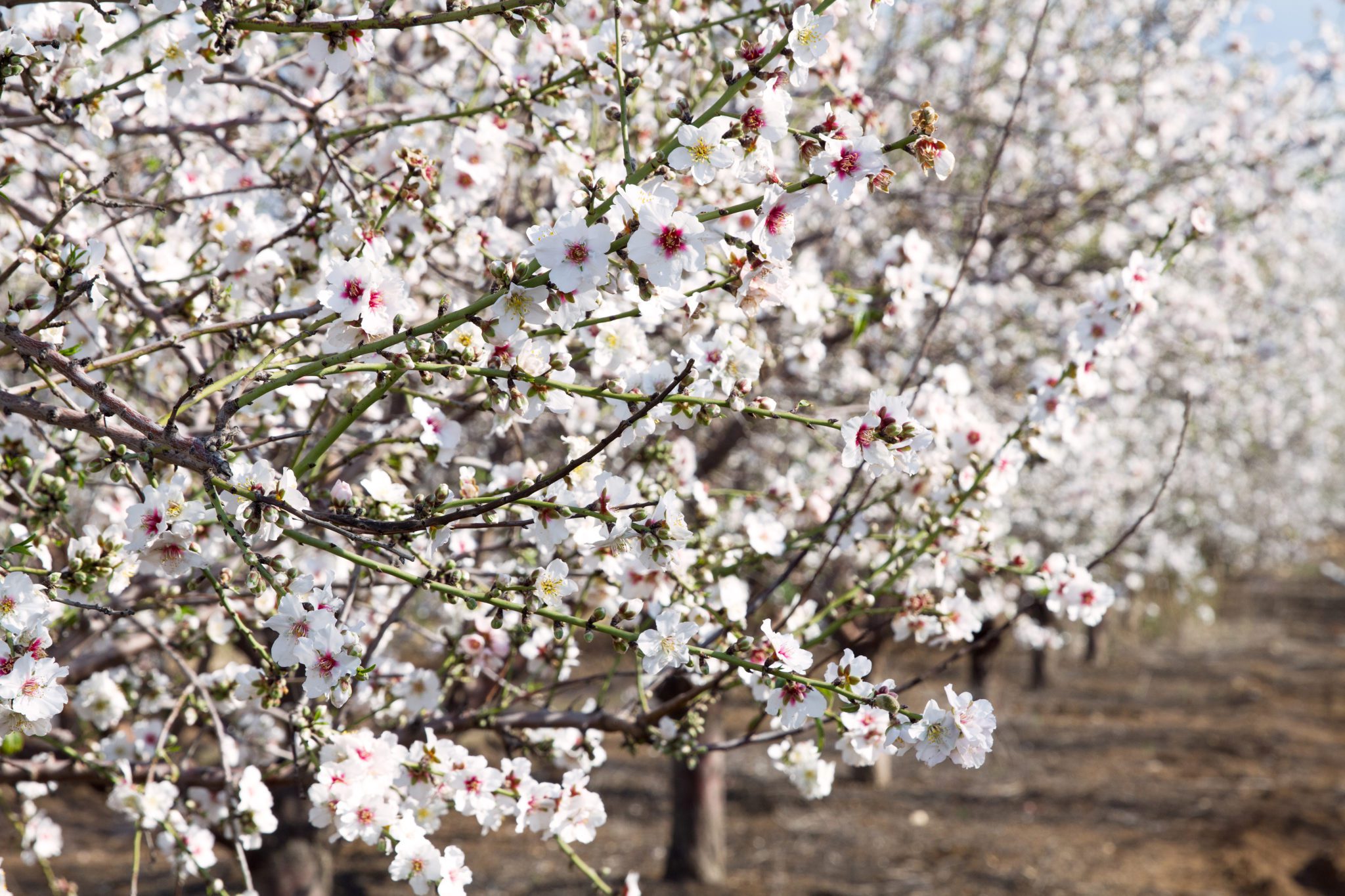In the midst of dormancy and with winter sanitation in full swing, growers are looking ahead to next year and strategizing how to best produce a healthy, bountiful crop. Their strategy should include removing mummy nuts from the orchard and irrigating trees that became water stressed during harvest, two practices that will not only generate greater yields but also increase the long-term health of an orchard.
In addition to mummy shaking and irrigating, however, growers need to look even further down the road to ensure they’re prepared for what’s arguably the second-busiest time of year—almond pollination.
As a grower, being organized before bloom sets you up for success—and less stress—during pollination. It also ensures that honey bee health is maintained to the upmost throughout growers’ coordination with beekeepers, pest control advisors (PCAs), applicators and county ag commissioners. Clear communication ahead of pollination ultimately helps to avoid unnecessary confusion and rushed decisions during the hectic season.
At this point in time, growers are highly encouraged to—if they haven’t already—nail down key pollination details with their beekeepers. To help define those key details and ensure all the bases are covered, here’s a checklist of five items you should discuss with your beekeeper to ensure you’re both on the same page:
- Confirm key points in your contract/agreement, including arrival date and location, frame counts, pesticide use during bloom, payment terms, hive removal timing and more. Consider outlining a pesticide plan that specifies which pest control materials you may use during bloom, as you and your beekeeper should agree on which products can be applied if a treatment is necessary.
- While contracts should be created and signed at this point, growers still in need of bees may access a sample template of an almond pollination contract/agreement at ProjectApism.org.
- If you plant supplemental forage in or near your orchard, consider speaking with your beekeeper about a discount on your contract.
- Ask your beekeeper if he/she plans to register their hives through the BeeWhere program. Beekeepers are legally required to register their hives by January 1 or upon arrival in California. While they can do so through their local county ag commissioner, the BeeWhere program provides a real-time GIS mapping system that allows beekeepers to mark hive locations with a simple pin drop on a map. And, new this year, BeeWhere’s new mobile app—BeeCheck—makes tracking and updating hive locations even easier. More information on BeeWhere may found at BeeWhereCalifornia.com.
- Decide who will provide potable water for the bees in or near the orchard. To ensure optimum bee health, you and your beekeeper should work together to ensure that bees have access to potable drinking water throughout bloom. This will ensure that bees spend more time pollinating the crop than searching for water, and it also safeguards against bees using water that is contaminated with pesticides. Between you and your beekeeper…
- the water should be checked and replenished throughout the bees’ time in the orchard,
- landings such as burlap or screens should be placed over water containers to make the water accessible and prevent bee drowning, and
- water sources should be covered or removed before a pest control treatment, or clean water should be provided after a treatment is made.
- Ask your beekeeper how they plan to mark their colonies. Marking each colony with contact information allows you and you PCA to quickly identify the hive owner, especially in instances when a bloom spray is absolutely necessary, and bees need to be removed from an orchard.
- Confirm you have correct contact information so you can quickly notify your beekeeper at least 48 hours in advance of any necessary pesticide applications by you, your PCA or your applicator. This advance warning is legally required for pesticide products with “toxic to bees” label statements and recommended for all other applications, particularly during almond bloom.
For additional detail on bloom preparation, honey bee health and more, visit Almonds.com/Pollination. And, if you’re interested in learning more about how to maintain bee health as well as the opportunities that come with planting bee forage, you’re invited to attend one of the Almond Board’s California Almond Sustainability Program (CASP) in the Orchard workshops to hear from experts on these topics and more. Visit Almonds.com/Events to view workshop dates, locations and more.
















